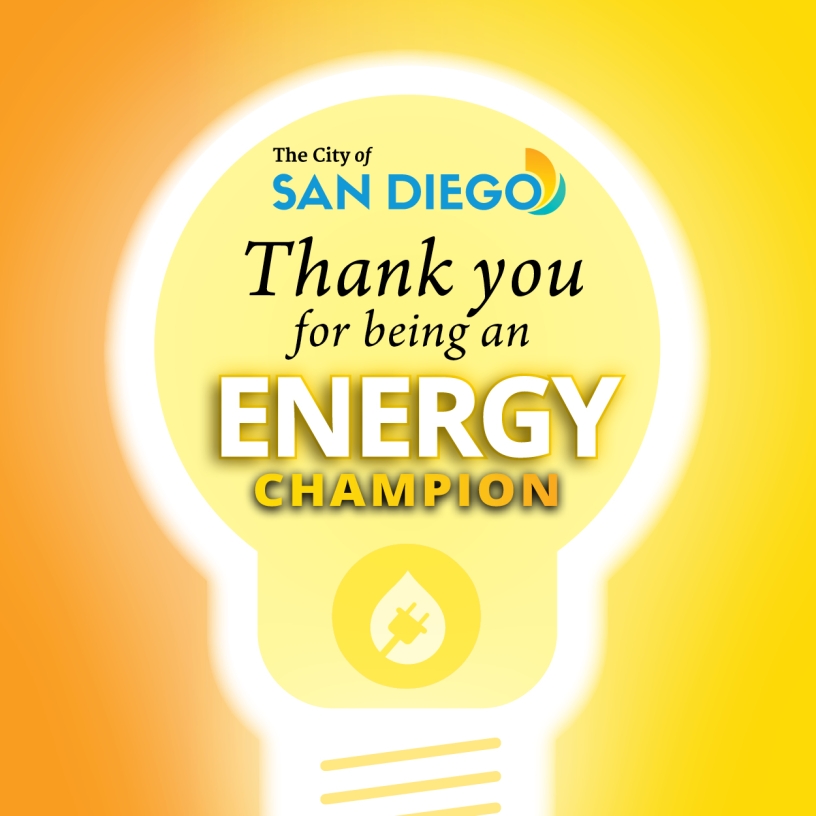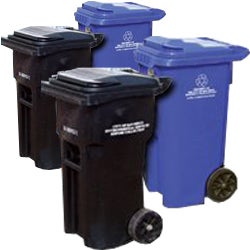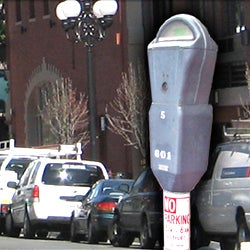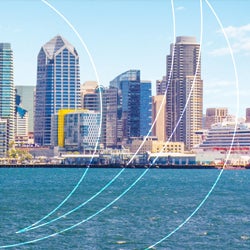Commercial Resources
Put Your Energy Data to Work
Lower Your Building’s Energy Use and Save Money!

Step 1:
Review the building's energy performance to identify changes and track progress in Portfolio Manager.
Step 2:
See how your building compares to other buildings in San Diego using our data visualization map.
Step 3:
Check out this list of resources for businesses interested in saving money on energy costs, including energy efficiency rebates, upgrades, and free classes from SDG&E.
The tips provided below will aid businesses looking to increase their energy efficiency, save money on energy costs, and better prepare for power outages.
What are some easy NO COST energy tips I can use to save energy at my business?
1. Turn Up Your Thermostat
- During warm weather months, set your thermostat to 74 degrees or higher when the work place is occupied, and 85 degrees or off after business hours. Using ceiling or room fans allows you to set the thermostat higher because the air movement will cool the room. You can save up to 3 percent for each degree the thermostat is set above 72 degrees.
2. Reduce Your Lighting
- A general rule is that a light should be off when no one is present. Turn off lights in unoccupied areas, remove excess lighting and turn off signage and other lights not necessary for security and safety.
3. Be Energy Smart With Office Equipment
- Turn off office equipment or set it to "power down" when not in use. Setting computers, monitors, and copiers to use sleep-mode when not in use helps cut energy costs by approximately 40 percent. Remember to turn equipment off at the end of the workday.
4. Use Shades and Blinds
- On hot days, draw the curtains and/or shades to keep the sun out. Remember to close doors to the outside to keep in cooler air.
What are some LOW COST TIPS I can use to save my business energy costs?
1. Install Efficient Lighting
- There are a number of low-cost solutions a business can invest in to make its lighting much more efficient and save money in the long run. For example: replace incandescent bulbs with compact fluorescents, which can last up to ten times longer; upgrade fluorescent lighting fixtures to high efficiency equipment; replace incandescent lights in exit signs with LED fixtures. This can reduce costs of these signs by up to 95 percent.
2. Install Programmable Thermostats
- Programmable thermostats or time clocks can automatically control temperature settings and save energy.
3. Use "Smart" Power Strips
- These sense the presence or absence of office workers and turn the attached equipment on or off accordingly.
4. Choose the Smallest Monitor
- The bigger the monitor, the more energy it uses. Switching from a 17-inch monitor to a 14-inch monitor saves energy by as much as 35 percent.
5. Maintain Your HVAC System
- Perform regular maintenance to keep your heating and air conditioning systems running more efficiently.
What are some wise INVESTMENT TIPS I can use to save my business long-term energy costs?
1. Retrofit Lighting
- Convert T12 lights and magnetic ballast to T8 lights and electronic ballast. Install occupancy sensors, which can reduce lighting costs by up to 40 percent. Convert hallway and non-public security lighting to energy saving 25-Watt T12 bulbs. Convert TV surveillance cameras to newer equipment, which may not require floodlighting.
2. Weatherize Buildings
- Install awnings, solar shade screens or sun-control film for windows, and apply a heat-blocking coating to your roof. Some incentives and rebates may be available to help defray initial costs.
3. Install an Energy Management System
- An EMS will control heating, ventilation, and air conditioning equipment and lighting systems automatically to maximize efficiency and savings.
4. Buy ENERGY STAR Products
- Energy Star certified equipment and products use less energy than other products, save money on utility bills, and help protect the environment. Establish a business policy of only buying Energy Star certified equipment such as computers, monitors, and printers.
What are some BUILDING AND DESIGN TIPS I can use to enhance the energy efficiency of my business?
1. General Cooling Measures
- Think carefully about using "green" design features. Use evaporative cooling wherever possible. Attempt to use natural ventilation and light surfaces. Encourage day lighting of interior spaces in the design. Surround all buildings and cover parking lots with trees to reduce local environmental temperatures. Specify light colored aggregates for local access road and sidewalk pavements.
2. Landscaping And Use Of Shade
- Combine architectural features and shading so that a minimum of the building envelope is exposed to the sun. Design landscaping around the building and over parking areas so that no parking area is exposed to the sun. This will not only reduce the heat build-up in parked vehicles, but will reduce the temperature of air blowing against the building by 6 to 8 degrees.
3. Combined Heat And Power Systems
- Often there is a balance between the heat requirements of an institution and its electrical needs. This energy match means that the waste heat from a small electrical generator can be used to generate electricity.
4. Solar Power on Rooftops
- Consider installing solar electric collectors and/or solar hot water collectors on the roof. Ensure that the building design includes adequate support for the dead weight load and the wind stress, and all conduits for pipes or wires.
5. Water, Gas And Ventilation
- Design a gray water collection system for irrigating landscaping. If natural gas is unavailable, consider ground source heat pumps. Design public space ventilation to respond to occupancy needs with such features as carbon dioxide detectors. Avoid air curtains that allow air leakage from conditioned spaces. Pressurize and test all ducts for leakage before dropped ceilings are installed.
6. Engineering Requirements
- Be sure that Performance Assurance or building commissioning is included in the engineering services provided by the engineer.
How can I prepare for potential power outages?
See the following links for more information on power outages:
What kinds of energy rebates and incentives is my business potentially eligible for?
The links listed below provide information on some of the potential energy rebates and incentives businesses may be eligible for:
Where can I find more information?
See the following links for more information:























